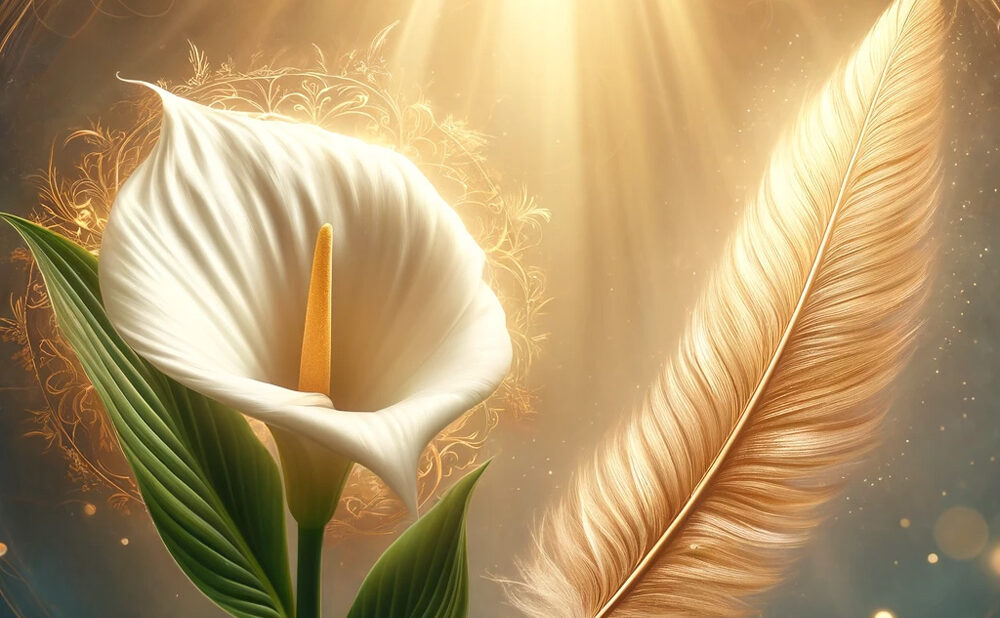It might not be TN…
Because TN is uncommon, it is not always recognised by doctors and dentists. Also diagnosis is difficult as there is no definitive test and other types of facial pain can easily be confused with TN. Diagnosis relies on the history of the complaint and its characteristics. But it may require a specialist i.e. a consultant neurologist to distinguish TN from the other facial pain conditions described below.
The causes of facial pain fall into three basic categories; neurological (nerve disorders), vascular (affecting blood vessels) and dental.
There are many other conditions which can cause facial pain, some of these are:
Geniculate neuralgia
- Severe sharp stabbing, ‘electrical’ pains experienced deep inside the ear
- Pain can be triggered by light touch, yawning, talking or chewing
- As with TN, it is usually caused by a blood vessel compressing the nerve
- The pain is usually fleeting, and responds to the sameanti-convulsant medications used for TN
Glossopharyngeal neuralgia
- Intense stabbing, shock-like pain similar to TN, lasting 1-2 minutes
- Pain is primarily at the back of the tongue, throat, ear and under the angle of the jaw (below the ear)
- Swallowing, cold drinks, talking or coughing trigger the pain
- Caused by compression of a nerve by a blood vessel
- As with TN, it is treated withanti-convulsant medication, and anaesthetic throat spray for instant relief during an attack.
- Sometimes the condition goes away entirely
See our leaflet on Glossopharyngeal Neuralgia which can be downloaded from the members’ area or contact the office (quoting your membership number) for a copy to be posted to you: [email protected]
Occipital neuralgia
- The pain is a constant aching throb with occasional stabs that are not provoked by facial movements or touch
- Normally experienced as pain on one side of the top of the head
- The cause can be arthritis, a whiplash neck injury, or a tumour (which may be benign i.e. not cancer)
- The condition may respond to anti-convulsant or anti-depressant medication or to physical therapy e.g. osteopathy. If caused by a tumour this might be removed
Post-herpetic neuralgia
- This is pain lingering long after an attack of shingles
- The pain will be in the same area as the shingles blisters were experienced and may be a constant burning, throbbing pain with ultra-sensitive skin
- The pain can persist for many months but may respond to anti-convulsant or anti-depressant medication
- It will eventually cease completely
See our leaflet on Post-herpetic neuralgia which can be downloaded from the members’ area or contact the office (quoting your membership number) for a copy to be posted to you: [email protected]
Post-traumatic neuralgia
- Burning pain resulting from physical damage to thetrigeminal nerve
- May follow a blow to the head e.g.as in a car accident, or after dental surgery
- Although it can be difficult to treat, the nerve can heal well in time
- Treatments include anti-inflammatory or anti-convulsant medication, pain-killing gel, or electrical nerve stimulation (TENS)
Superior laryngeal neuralgia
- Sharp TN-type stabbing pains in lower jaw, base of the ear, and one side of the throat
- Pain is triggered by swallowing, straining the voice, yawning or turning the head
- Anaesthetic throat sprays bring temporary relief, along with anti-convulsant medication
- If medications don’t help, surgery may be an option
Trigeminal neuritis
- Constant dull burning and tingling sensation, with hypersensitivity spreading from the forehead down to the jaw, on one side only
- Can be caused by injury to the trigeminal nerve, a viral or bacterial infection, or even a reaction to a toxin or allergen
- Treatment would depend upon the suspected cause e.g. antibiotics or anti-inflammatory medication
Cluster tic syndrome
- Possibly the most confusing to diagnose, this is a rare combination of TN plus cluster headaches (see below)
- It is not known if this is two separate conditions suffered simultaneously, or a distinct complaint in itself. So it is treated as two conditions, with two types of medication
- The cluster headaches may eventually disappear, although the TN will probably persist
Cluster headache
- The pain is searing, burning and radiates from the temple and eye, making the eye constantly red and watery. Lying down worsens the pain and it can strike during sleep
- The pain is on one side of the face, although the side can vary. It is episodic rather than continuous and bouts last anything from a week to a month
- This condition often runs in families
- Although painkillers are ineffective some other medications can help and the pain can go of its own accord and never return
Atypical odontalgia
- The pain of this confusing condition feels like severe toothache, causing a constant burning, aching throb
- But as with TN, no problem will be found with the teeth and painkillers will have no effect
- Although depression is not the cause, anti-depressant medication can be helpful
Facial migraine
- Severe throbbing aching felt in the face, below eye-level, seeming to come from the nostrils, cheeks, gums and teeth
- The pain may last anything from 3 hours to 3 days and be accompanied by nausea
- Triggers include caffeine, alcohol, stress, bright lights, noise or hormonal changes
- The pain responds topain-killers and changes in lifestyle
Chronic paroxysmal hemicrania
- Episodes of throbbing, pulsating pain on one side of the upper face, several times a day, lasting 2- 45 minutes
- The pain can radiate from the eye and temple, cheek or forehead, down to the shoulder and may also cause a runny nose
- It responds to medication used to treat arthritis
Temporal arteritis
- The pain throbs, burns and radiates from one temple that feels tender to the touch, and vision may be blurred. The pain is constant and intense and may be provoked by eating
- It affects people over 50 years, who have ‘normal’ headaches which suddenly feel totally different
- Caused by an inflamed artery and can be diagnosed by a blood test
- The disorder can lead to loss of sight unless each recurring bout is treated with steroids
Myofascial pain
- The pain is a dull ache, unlike the electrical ‘stabs’ of TN
- But it can be confused with TN because it radiates to the teeth, jaws and ears, with sensitive spots that trigger it
- It is painful to chew or open the mouth wide, and it produces a taut area of hard, knotted muscle
- Causes include grinding the teeth, jaw clenching, a blow to the jaw, infections, stress or vitamin and mineral deficiencies
- Treatments and therapies vary, according to the cause
Temporomandibular disorder (TMD): disorders of the jaw joint
- The throbbing ache of TMD can affect both sides of the face
- The pain is felt around the ear, in the jaw joint/muscle and in the temples
- The jaw feels ‘locked’ and cannot be opened without pain, making eating and speaking very difficult
- TMD is quite common and can be caused by an injury, grinding and clenching the teeth or teeth meeting incorrectly (bite)
- Treatment varies from painkillers and anti-depressant medication, to relaxation, massage, or a dental splint to readjust the bite
- If none of these treatments are helpful, anaesthetic injections or acupuncture can be tried, or the condition may eventually resolve itself
It is crucial to maintain good oral hygiene, this means brushing twice daily with fluoride toothpaste (and spitting, but not rinsing), flossing daily and attending the dentist once every 6-12 months. Pain from a dental origin can often mimic that of trigeminal neuralgia. This may include:
Reversible Pulpitis
- Pain does not linger after a stimulus, such as cold or sugar, is removed.
- It is usually a vague, sharp pain that cannot be located to any particular tooth.
- Causes include decay (caries), severe wear on the teeth, trauma, previous large restorations.
- Treatment depends on the cause, but the tooth may need a filling, root canal treatment (usually with a crown to avoid the tooth fracturing) or extraction.
Irreversible Pulpitis
- A spontaneous severe pain that can be throbbing or shooting (or both). The pain will linger for long periods, even if the initial stimulus is removed.
- It is often worsened by heat and relieved by cold.
- It can often be localised to a single tooth.
- The tooth will require root canal treatment (usually with a crown) or extraction.
- Antibiotics are ineffective.
Dentoalveolar abscess
- An acute abscess will have intense throbbing, extreme pain, the tooth will often feel elevated or spongy and be extremely tender to the lightest of touch. Acute abscesses require drainage by root canal treatment, extraction or even a small incision in the gum (if a swelling is present). If a large facial swelling is present, antibiotics may be given. Antibiotics are not a long term solution and the infection will recur without proper follow up treatment.
- A chronic abscess is one that usually has little or no pain. There will be a draining sinus (gum boil) which can cause a bad taste in the mouth. The tooth needs extraction or root canal treatment.
Apical periodontitis
- An inflammatory condition around the apex of the tooth, due to bacterial invasion of the pulp (nerve/blood supply) of the tooth, often due to decay.
- Often spontaneous pain, well localised to the tooth in question, it can be intense or throbbing. Sometimes it is aggravated by biting. Hot or cold does not usually cause pain, however, in back teeth due to multiple roots being present – the nerve in one root may die before the rest, so hot/cold could cause pain.
- The treatment is usually root canal treatment (plus crown) or extraction.
Dry Socket
- Dry socket is a localised small scale infection of the bone of a socket (once a tooth has been extracted).
- It is due to the disintegration of a blood clot or failure of a clot to form.
- Signs/symptoms include severe pain starting 2-4 days after extraction (not straight after, this is normal post-operative pain) alongside a bad taste in mouth, bad smelling odour/breath, grey remnants or empty socket.
- If you smoke after a tooth is taken out, this is highly likely to occur. It is also common in extraction of wisdom teeth and if you have had one in the past, there is an increased risk again. Usually they are self-limiting and with irrigation (cleaning) by the dentist and placement of a dressing (usually something that has local anaesthetic in it and is antibacterial) it will heal up. Salt water rinses should be continued. If it persists, antibiotics may be given.
Cracked tooth syndrome
- A sharp pain on biting, usually worse on release of the pressure.
- Occasionally also painful to cold.
- Tooth usually has a large restoration (filling) in it.
- This is difficult to diagnose and can often mimic trigeminal neuralgia with the sharpness of the pain.
- Diagnosis can be aided by putting a metal band around the tooth and leaving in situ for a few days, to see if the pain eases off. If it does not, the tooth may need to be opened, by removing the old filling, and trying to identify the crack. If it is found to be right the way through the tooth, it is likely the tooth will need extracting. If it is not, the tooth will either need root canal treatment with a crown, or just a crown alone.
Bruxism (Clenching and grinding)
- Bruxism, or grinding/clenching, can present in similar ways to TN with a sharp shooting pain at the joint of the jaw, or into the ear. It often has dull aching as well. Teeth may all feel tender or as if they are ‘sore’.
- Diagnosis is difficult to reach, but signs of wear on the teeth, palpation (feeling) of the muscles for spasm/tightness/enlargement and a history of stress can help with a diagnosis.
- This condition is chronic and requires good patient involvement. Lavender oil on the pillow at night, stress reduction, use of a night guard as a shock absorber to minimise wear and regular practice of ‘Rocabado’s exercises’ can all help.
Sinusitis
- This is inflammation of the lining of the sinuses due to infection
- It causes pain across the cheeks and forehead and can affect both sides of the face
- Antibiotics usually clear it within 3 months, but if it is chronic, surgery may be required
Optical
Regular eye checks can pick up problems which might cause head or face pain. Even things as simple as wearing spectacles that are too narrow for the head can cause facial pain and should be ruled out.
Cancer secondaries
In very rare cases, persistent increasing pain can be a sign of cancer or a spread of cancer from another area.
Causes of Chronic Orofacial Facial Pain – Flowchart for Diagnosis – for Patients




